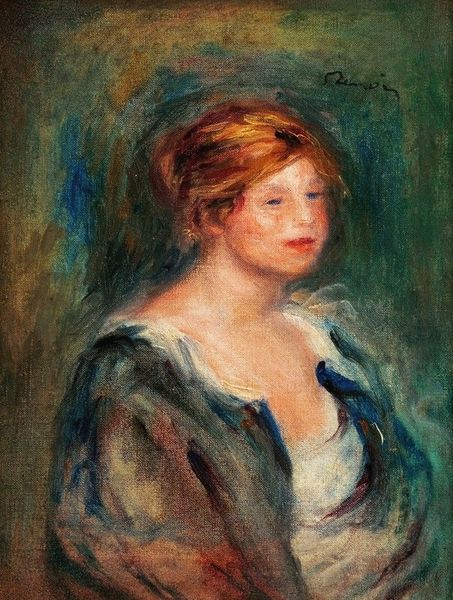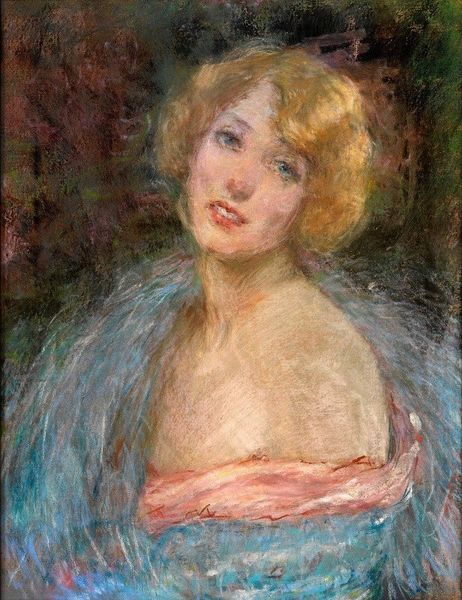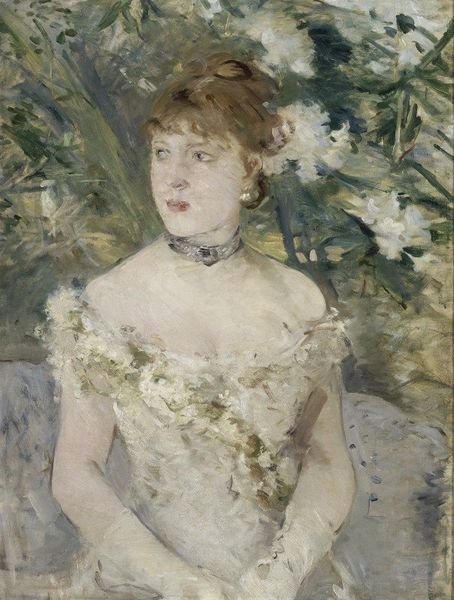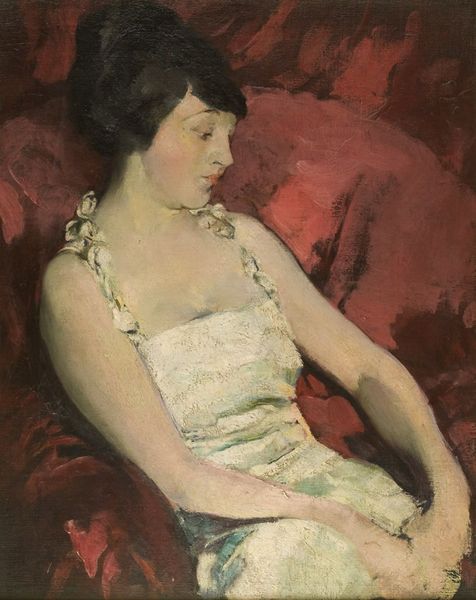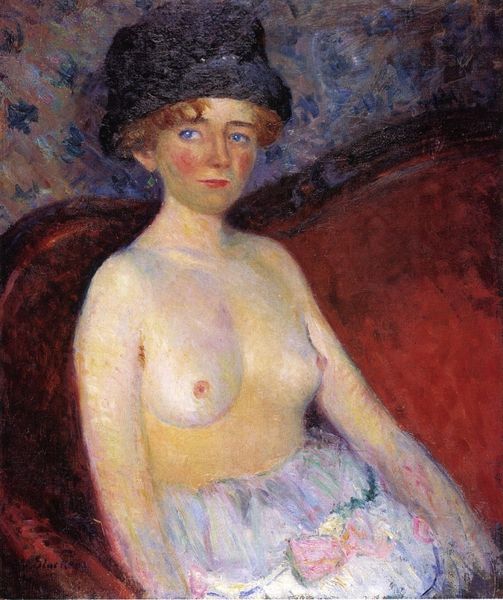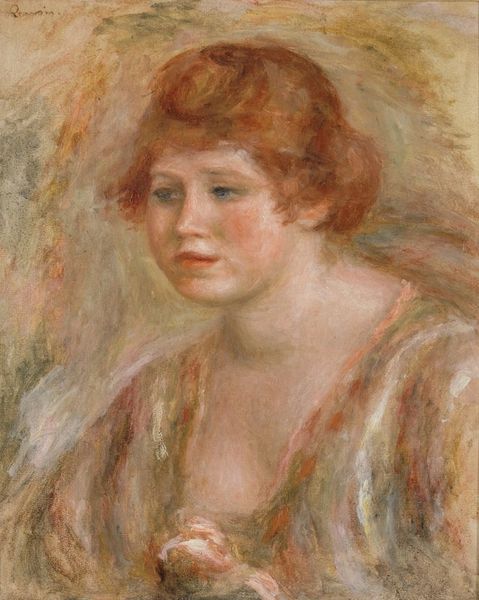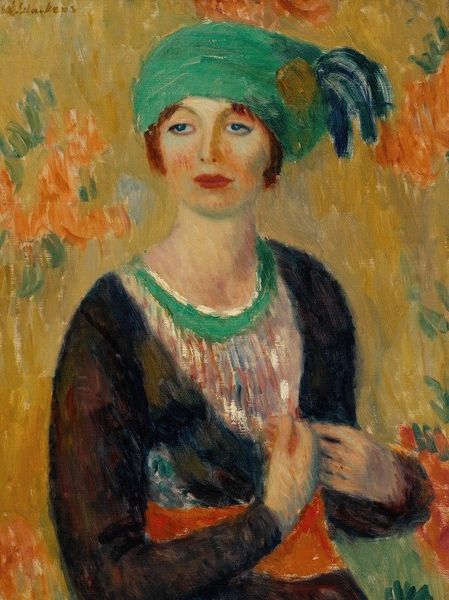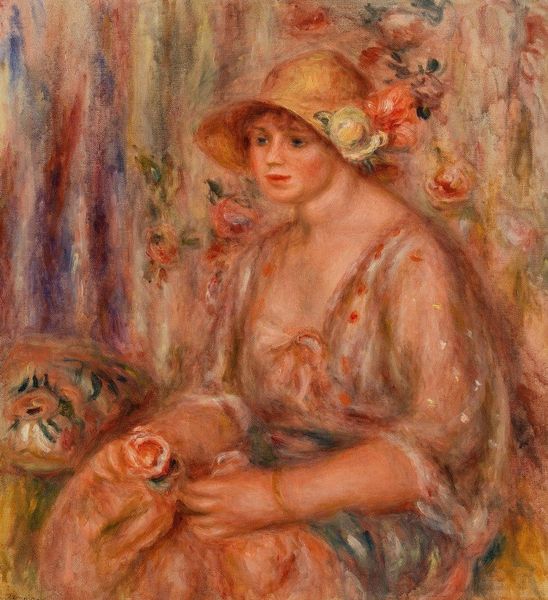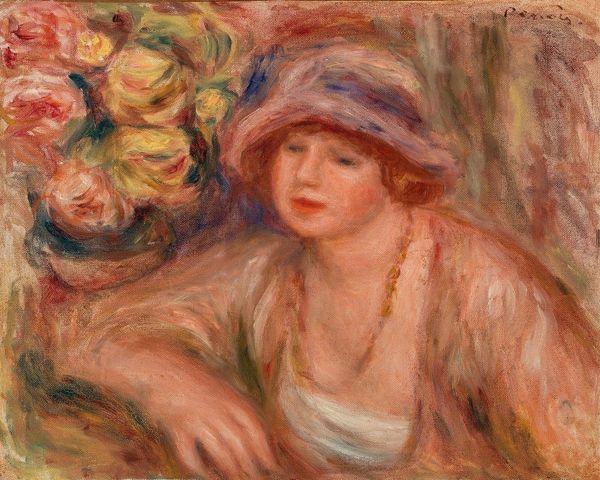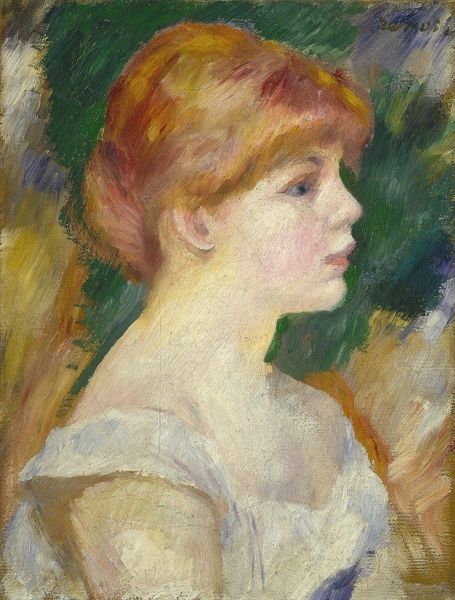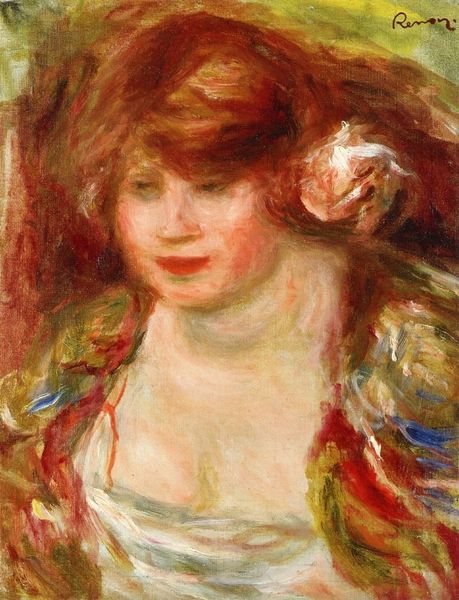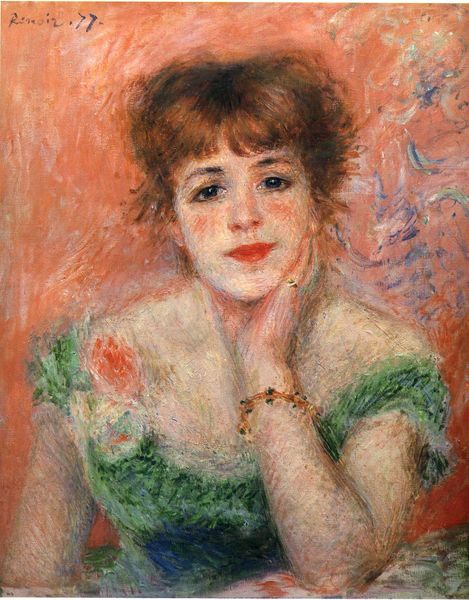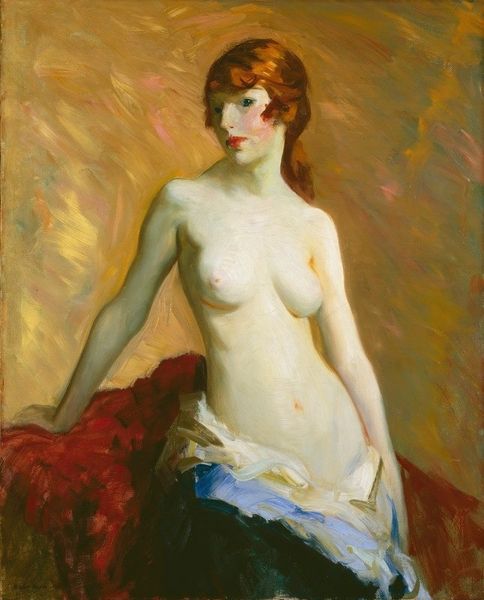
Copyright: Public Domain: Artvee
Curator: This painting is William Glackens’ portrait of Kay Laurell, circa 1915. The artist used oil paints to capture the subject in this intimate composition. Editor: I'm immediately struck by the delicate brushstrokes. It's as if she's emerging from a dream, or perhaps a cloud of roses, which isn't far off with that floral backdrop. Curator: Indeed. The backdrop itself, which almost envelops Laurell, provides context to this era, one in which the portrait emerged as the definitive form for modern women in both America and Europe. As such, the image becomes as much a statement about modern image-making as it is a likeness. Editor: I see your point. Laurell’s gaze is engaging but ambiguous. Is she seducing, teasing, or just presenting herself? What’s her story? It’s more of an assertion of identity than pure aesthetic enjoyment. Curator: You touch on something essential. Glackens had a talent for depicting the human condition and urban realism. It feels almost like glancing at a fleeting moment caught in time, doesn't it? Editor: Precisely. Also, and maybe this is a reach, I sense a visual kinship with some of Renoir’s paintings. There's the same concentration of the gaze and rosy-cheeked color. Is that simply impressionist DNA at play? Curator: There's a lineage, for sure. It is also interesting to know that the work, which seems casual at first glance, has a much more rigid structure that you would assume if you only considered impressionism. It's fascinating, isn’t it, how the gaze of the modern viewer can reshape even the art from over a century ago? Editor: Absolutely. I think that "Kay Laurell" exemplifies art's uncanny ability to mirror and mold perspectives across time. It shows us how art acts a timeless mediator between artist, sitter, and, of course, viewer.
Comments
No comments
Be the first to comment and join the conversation on the ultimate creative platform.
